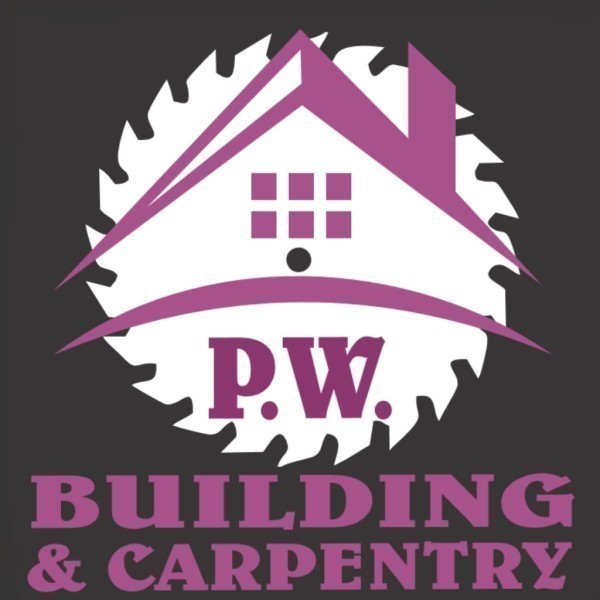Find a Property Refurbishment Business in the UK
Filter your search
Post your job FREE and let trades come to you
Save time by filling out our simple job post form today and your job will be sent to trades in your area so you can sit back, relax and wait for available trades to contact you.
Post your job FREEUnderstanding Property Refurbishment
Property refurbishment is a fascinating journey that transforms a tired, old building into a vibrant, modern space. Whether you're a homeowner looking to update your living space or an investor aiming to increase property value, refurbishment offers a world of possibilities. This process involves a range of activities, from minor repairs to major renovations, each contributing to the overall enhancement of the property.
The Importance of Property Refurbishment
Refurbishment is not just about aesthetics; it plays a crucial role in maintaining and increasing the value of a property. A well-refurbished property can attract potential buyers or tenants, ensuring a good return on investment. Moreover, it can improve the functionality and comfort of a home, making it more enjoyable for its occupants.
Enhancing Property Value
One of the primary reasons people undertake property refurbishment is to boost the property's market value. By updating outdated features, improving energy efficiency, and enhancing the overall appearance, a property can become significantly more appealing to buyers. This can lead to a higher selling price or rental income.
Improving Living Conditions
Refurbishment can also greatly improve the living conditions within a property. By addressing issues such as poor insulation, outdated plumbing, or inadequate lighting, homeowners can create a more comfortable and efficient living environment. This not only enhances the quality of life but can also lead to savings on utility bills.
Planning Your Property Refurbishment
Before diving into a refurbishment project, it's essential to have a clear plan. This involves setting a budget, determining the scope of work, and establishing a timeline. Proper planning can help avoid unexpected costs and delays, ensuring a smooth and successful refurbishment process.
Setting a Budget
Creating a realistic budget is a critical step in the refurbishment process. Consider all potential costs, including materials, labour, permits, and unexpected expenses. It's wise to set aside a contingency fund to cover any unforeseen issues that may arise during the project.
Determining the Scope of Work
Decide which areas of the property need attention and what specific improvements are required. This could range from simple cosmetic updates, like painting and flooring, to more extensive renovations, such as kitchen or bathroom remodels. Clearly defining the scope of work will help guide the project and keep it on track.
Establishing a Timeline
Setting a realistic timeline is crucial for managing expectations and ensuring the project stays on schedule. Consider the availability of materials and contractors, as well as any potential delays that could impact the timeline. Regularly reviewing and adjusting the timeline as needed can help keep the project moving forward smoothly.
Choosing the Right Professionals
Hiring the right professionals is key to a successful refurbishment project. From architects and designers to contractors and tradespeople, each plays a vital role in bringing your vision to life. Take the time to research and select experienced and reputable professionals who can deliver quality work within your budget and timeline.
Finding a Reliable Contractor
When selecting a contractor, consider their experience, reputation, and communication skills. Ask for references and review their previous work to ensure they have the expertise needed for your project. A good contractor will be transparent about costs, timelines, and any potential challenges that may arise.
Working with Architects and Designers
Architects and designers can provide valuable insights and creative solutions to maximise the potential of your property. They can help with space planning, material selection, and overall design, ensuring the final result meets your needs and expectations. Collaborating with these professionals can lead to a more cohesive and successful refurbishment.
Engaging Skilled Tradespeople
Skilled tradespeople, such as electricians, plumbers, and carpenters, are essential for executing the technical aspects of a refurbishment project. Ensure they are licensed and experienced in their respective fields to guarantee quality workmanship and compliance with building codes and regulations.
Key Areas to Focus On
When refurbishing a property, certain areas can have a significant impact on the overall value and appeal. Focusing on these key areas can ensure a successful refurbishment that meets both aesthetic and functional goals.
Kitchen and Bathroom Upgrades
Kitchens and bathrooms are often the focal points of a home, and upgrading these spaces can greatly enhance the property's value. Consider modernising fixtures, appliances, and finishes to create a more appealing and functional environment.
Improving Energy Efficiency
Enhancing energy efficiency is not only environmentally friendly but can also lead to cost savings. Consider upgrading insulation, windows, and heating systems to reduce energy consumption and improve comfort.
Enhancing Curb Appeal
The exterior of a property is the first thing people see, so enhancing curb appeal is crucial. Simple improvements like landscaping, painting, and updating the front door can make a significant difference in the property's overall appearance.
Common Challenges in Property Refurbishment
While property refurbishment can be rewarding, it also comes with its share of challenges. Being aware of these potential obstacles can help you prepare and navigate the process more effectively.
Dealing with Unexpected Issues
Unexpected issues, such as structural problems or hidden damage, can arise during a refurbishment project. Having a contingency plan and budget in place can help address these challenges without derailing the project.
Managing Costs
Staying within budget can be challenging, especially if unexpected expenses arise. Regularly reviewing costs and making adjustments as needed can help keep the project on track financially.
Ensuring Quality Workmanship
Ensuring quality workmanship is essential for a successful refurbishment. Regularly inspecting work and addressing any issues promptly can help maintain high standards and prevent costly mistakes.
Legal and Regulatory Considerations
Property refurbishment often involves navigating various legal and regulatory requirements. Understanding these considerations can help ensure compliance and avoid potential issues.
Obtaining Necessary Permits
Depending on the scope of work, certain permits may be required for a refurbishment project. Research local regulations and obtain any necessary permits before starting work to avoid potential fines or delays.
Complying with Building Codes
Ensuring compliance with building codes and regulations is crucial for the safety and legality of a refurbishment project. Work with professionals who are knowledgeable about these requirements to ensure all work meets the necessary standards.
Understanding Property Laws
Familiarise yourself with property laws that may impact your refurbishment project, such as zoning regulations or restrictions on certain types of work. This knowledge can help prevent legal issues and ensure a smooth process.
Financing Your Property Refurbishment
Financing a refurbishment project can be a significant consideration. Understanding your options and choosing the right financing solution can help make the process more manageable.
Exploring Financing Options
There are several financing options available for property refurbishment, including personal loans, home equity loans, and remortgaging. Research each option to determine which best suits your needs and financial situation.
Budgeting for Long-Term Savings
While refurbishment can be costly, it can also lead to long-term savings. Consider the potential return on investment and energy savings when budgeting for your project to ensure it is financially viable.
Seeking Professional Financial Advice
Consulting with a financial advisor can provide valuable insights and guidance on financing your refurbishment project. They can help you understand your options and make informed decisions that align with your financial goals.
Frequently Asked Questions
- What is property refurbishment? Property refurbishment involves updating and improving a property to enhance its value and functionality.
- Why is property refurbishment important? Refurbishment can increase property value, improve living conditions, and ensure the property remains in good condition.
- How do I plan a refurbishment project? Start by setting a budget, determining the scope of work, and establishing a timeline to guide the project.
- What professionals do I need for a refurbishment project? Consider hiring architects, designers, contractors, and skilled tradespeople to ensure quality work.
- What are common challenges in refurbishment? Challenges include unexpected issues, managing costs, and ensuring quality workmanship.
- How can I finance a refurbishment project? Explore options like personal loans, home equity loans, and remortgaging to finance your project.


































